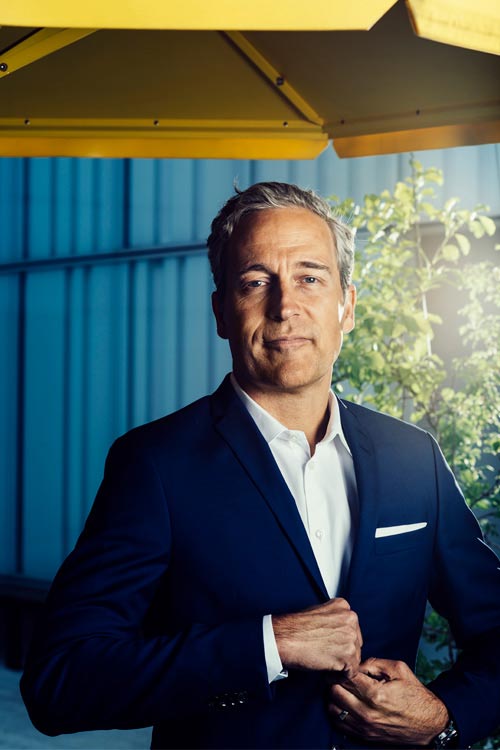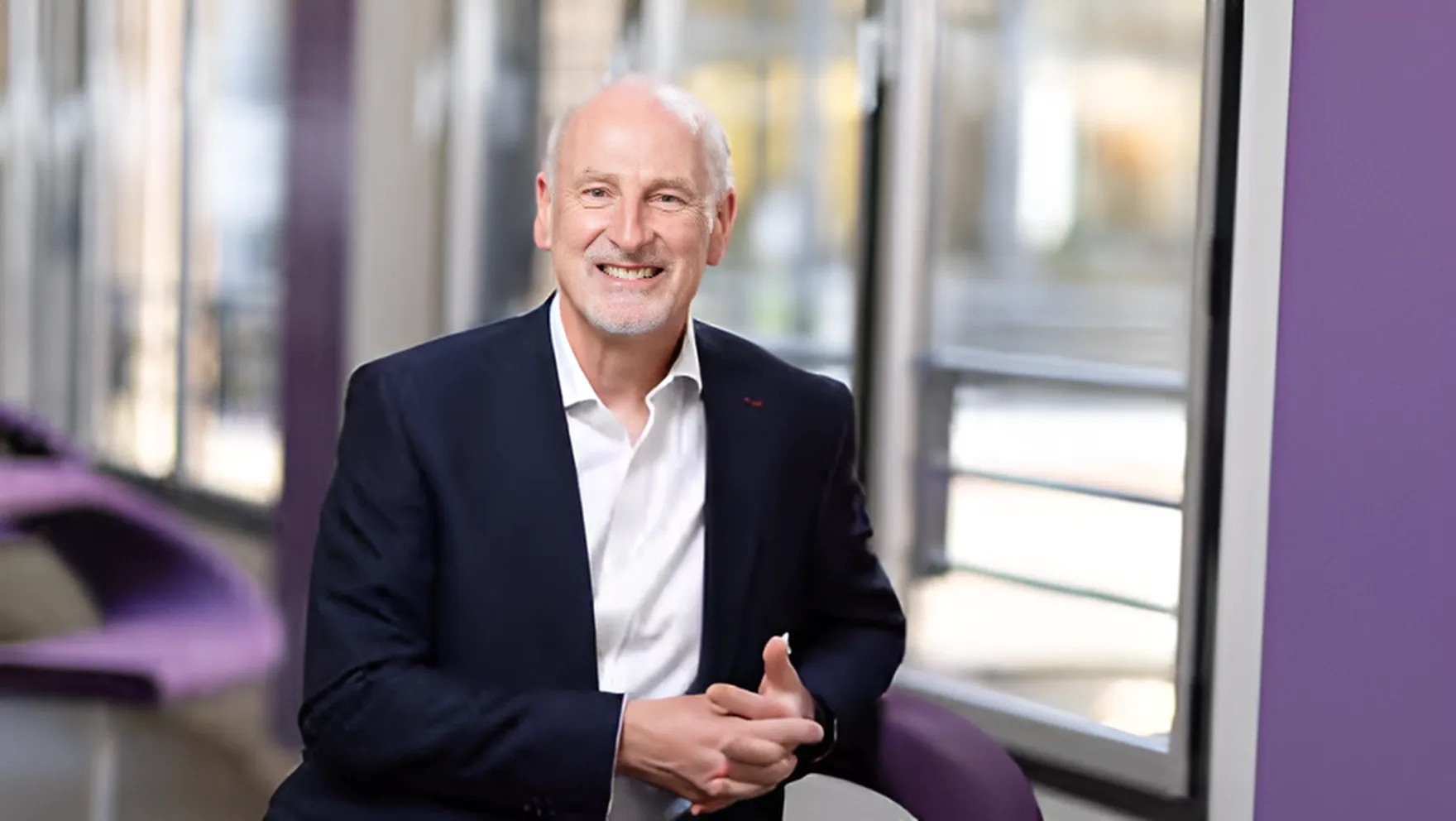Ericsson’s 5G Revolution
Fifth generation (5G) wireless technology will be significantly faster, less expensive, more flexible, more secure and more stable than anything the world has seen. It will serve as the backbone for the next wave of connectivity, enabling ubiquitous adoption of numerous new technologies, including self-driving cars, the internet of things (IoT), autonomous drones and artificial intelligence.
Global network and telecommunications giant Ericsson knows what is coming—and it is determined to be a central player in the 5G ecosystem that emerges. The Swedish firm wants to fuel change—it projects more than 500 million 5G subscriberscriptions globally by 2022—by driving how organizations across all sectors advance their business with 5G. That means moving beyond just building a platform that will enable a speedier wireless network. Instead, the company is working with other leading telecom companies and network service providers to build the new products, software and services that will use the platform, says Niklas Heuveldop, chief strategy officer, senior vice president and head of technology and emerging business, Ericsson, Stockholm. It is a more holistic approach than the company has taken to past technological advancements.
“We’re trying to get in front of the technology,” says Mr. Heuveldop. “So we’re spending a lot more time on the applied technology than we have in the past. We’re asking: ‘What kind of requirements do we need to support so that other companies can make the most of 5G?’ We want to know what value 5G is going to create, and who it will create value for and how we can monetize that.”
Bringing that strategy to fruition, however, means the 141-year-old company has to break down some internal barriers to collaboration and overhaul the way it innovates.
“We’re maybe not world famous for the way we work with developer partners,” he says. “But, this time around, we’re working to develop expertise with the industries of many of our nontraditional customers. Our expectation is that when we go commercial within the next two years, we’ll have a really good idea of what we’re going to need to do to support the network and our partners to really make 5G take off.”
“We think 5G will change everything.” —Niklas Heuveldop, chief strategy officer, senior vice president and head of technology and emerging business, Ericsson
Converge and Collaborate
To get employees thinking about that future and how Ericsson’s core platform could be applied to various tech products and services—and address the varying needs of so many customers—Ericsson felt it required a specific unit where new ideas could be cultivated. Mr. Heuveldop leads the unit, called Technology & Emerging Business. The goal was to bring together disparate parts of the company—including corporate strategy and technology, research, business innovation, mergers and acquisitions and emerging business—to work together for the 5G cause. The unit is basically a small, autonomous innovation and development company within the larger organization.
“Our research teams have a long-standing history of being engaged with customers in proof-of-concept experiments that show the technology can work,” Mr. Heuveldop says. “But it hasn’t been their mandate to stand up and demonstrate actual, viable products. But with the business innovation- and IoT-focused unit, we’re now able to support and match the more interesting ideas that come out of research with good business development.”
“We know that we have to embrace ‘different,’ because we still need our different groups to operate with different horizons and to specialize in different areas of expertise.” —Niklas Heuveldop
Forming the new unit meant merging a number of large, independent groups with strong subcultures, very different capabilities and for some, no previous experience with broad collaborations. Not everyone was excited, however, about the new venture. Some groups, for example, did not value input from others, while others were used to a formal, structured approach to business.
To bridge those internal cultural chasms, Mr. Heuveldop and his expanded leadership team spent countless hours together getting to know each other and looking for common ground with their individual styles. They also brought all of the employees from across the different, merged business units into “intense gatherings” aimed at explaining the combined potential of the new Technology & Emerging Business unit, while also accepting the differences among the merged entities.
Start Small and Build
Ericsson projects the total 5G-enabled market to be worth more than $1.2 trillion by 2026. Share on X One area where the company expects 5G to have a potential major impact is in connected health care and potentially remote surgery. Currently, network technology limits the medical procedures that can be done remotely, but the higher speeds of 5G networks will end the perceptible lag time between when a surgeon in one part of the world moves his or her hand and when the robot on the other end receives and processes the request. To that end, Ericsson has partnered with King’s College London to develop a proof of concept adding haptic technology to its 5G capabilities via a glove that surgeons can use to “feel” and control robotic fingers and equipment durin g surgeries being conducted thousands of miles away. It remains to be seen if this will become a commercial product, but it is important to showcase the opportunities with 5G, according to Mr. Heuveldop.
g surgeries being conducted thousands of miles away. It remains to be seen if this will become a commercial product, but it is important to showcase the opportunities with 5G, according to Mr. Heuveldop.
The 5G revolution will open a seemingly endless stream of these investment opportunities. Take IoT. Ericsson predicts that 18 billion IoT devices will be connected by 2022. These devices include everything from electric meters and fitness watches to electric cars and radio frequency identification tags that can track objects like luggage. And some 27 billion machine-to-machine connections are expected by 2024, according to Machina Research. “Within our business innovation teams, we’re looking to run use cases until we have a critical mass in the marketplace and can scale up,” Mr. Heuveldop says.
So he must be cautious about where he and his unit ventures. His team embarks on a process of “advanced discovery” before launching any project or partnership. They collaborate with various academics to study market trends, monitor what leading competitors are doing and study venture capital (VC) firms to see what elements of 5G they are investing in. “All of that gives us a good view of what aspects of advanced technology are going to get the most attention,” Mr. Heuveldop says. “From there, we can apply the same approach a VC firm might. We decide what ideas to fund, what operating models to invest in.”
But even when the unit decides to make an investment in a particular project or partnership, Mr. Heuveldop says they do not immediately go big. Instead, the team aims to create products and services on a limited scale (so-called minimum viable products)—such as the remotely controlled mining excavator it’s piloting with Swedish companies Boliden and Volvo Construction Equipment—that Ericsson can someday reapply to other industrial uses and sell together with operators worldwide. By conducting smaller experiments and creating specific solutions for individual customers, Mr. Heuveldop and his team are able to measure the success of these efforts and move the winning ideas into larger business areas. The idea, as Mr. Heuveldop puts it, is “to nurture and resource innovation projects correctly [and] keep them from being quickly drowned in the core business.” This approach also keeps Mr. Heuveldop’s team from spending big on an innovation that turns out to be a bust.
“It is a natural part of innovation that we have failure. We’ve built that into our DNA.” —Niklas Heuveldop
Fail Fast, Move On
The company has struggled with making costly misplaced bets in the past, and Mr. Heuveldop knew it had to do better with 5G. “Historically with our research and business development units, we’d have funding cycles, come up with innovations and run with the ideas no matter what,” he says. “But that’s not the most efficient use of our capital. We knew we needed to be more diligent about how we invest on a large scale. We want to make sure the right ideas get resourced and accelerated. But perhaps more important, we want to make sure that the ideas less likely to succeed, or those that aren’t going to be of value, get killed early in the process and don’t distract us.”
One recent 5G project that failed was a platform that would have delivered augmented reality tools aimed at transforming the typical in-store shopping experience. But after undertaking a review of the project—something Mr. Heuveldop’s group continually does with new endeavors—his team decided to shelve the it. “The platform was outside our strategic focus areas, and our ability for monetization of that platform was too limited,” he says.
Leaders often have to make those kinds of difficult decisions when the business case for a new project cannot be made. They also, then, have to explain to people who have invested their time and effort into something why it is not going to work.
“This is a difficult process,” Mr. Heuveldop says. “It should be difficult. We have to accept that, because if we have the right people they are going to be passionate about their ideas. And I’d be lying if I tell you that after we make the decision to kill something some people aren’t going to continue to drive it forward or even work on it on the side. We know that happens.”
For Mr. Heuveldop, a big part of meeting this challenge is building a culture that sees failure as a necessary and healthy part of the innovation process. “We make sure that our people know ultimate success is not dependent on every project succeeding,” he says. He has helped his team become comfortable with the idea that just 3 in 10 projects are really going to succeed. “It is a natural part of innovation that we have failure. We’ve built that into our DNA.”
The journey to a 5G world will not be linear—there will be setbacks and sidetracks. But Mr. Heuveldop is confident Ericsson has the right strategy and risk appetite to help build the future. What is on the horizon is nothing less than a paradigm shift, he says.
“We think 5G will change everything. The performance, reliability and security will fundamentally change the way business is done.”



